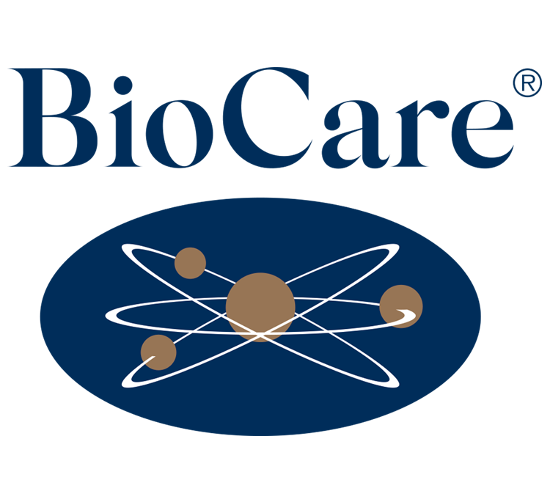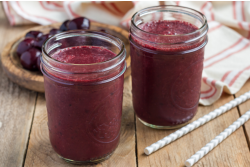Striking statistics from Public Health England indicate that only 31% adults and 8% teenagers meet the bare minimum recommendation of eating ‘5 A Day’.[i] An adequate daily intake of fruits and vegetables is crucial for our health. It can help to support immunity, reduce disease risk, and improve overall health. An exciting way to increase your daily plant intake and consume at least 5-A-Day is to focus on ‘eating the rainbow'.
THE IMPORTANCE OF EATING COLOURFULLY
Many people stick to a limited variety of foods which they know and enjoy most. However, this common dietary habit means that the majority of the population is missing out on the plethora of health benefits which other plants have to offer! In particular, different coloured plants provide their own unique array of nutrients, including micronutrients (vitamins and minerals) and phytonutrients (e.g. lycopene, resveratrol, epigallocatechin gallate), many of which function as antioxidants.
Antioxidants are those all-important molecules which have the capacity to inhibit oxidation, a process that creates unstable molecules known as free radicals which otherwise have the capacity to cause cell and tissue damage. More specifically, antioxidants have an electron spare to donate to free radicals to neutralise them. We need a balance between free radicals and antioxidants at any one time to ensure that free radicals are swiftly neutralised before they have a chance to cause damage, known as oxidative stress, and drive poor health outcomes.[ii]
A major driver of chronic oxidative stress nowadays is our high exposure to toxins via the air we breathe (e.g. urban air pollution), the food and drink we consume (e.g. burnt/chargrilled foods, caffeine, alcohol, pesticides, bisphenol-A), and the products we apply to our skin (e.g. triclosan). We can also become exposed to free radicals via our own metabolism, particularly when we over-train[iii] and are chronically inflamed[iv] (e.g. due to an inflammatory condition such as asthma). In order to protect us from free radicals from both our internal and external environment, our body must have robust defences in place, which includes a healthy antioxidant status.
This is particularly important for the health of our lungs since they are exposed to a high concentration of free radicals every second.[v] They are exposed to even higher levels when there is an inflammatory lung condition such as asthma.[vi] Our lungs have evolved to be rich in enzymes which function as antioxidants, termed antioxidant enzymes.[vii],[viii]These are nutrient demanding and require a combination of copper, zinc, manganese, iron, glutathione, and selenium. An optimal daily intake of these nutrients is essential to ensure that our lungs are as resilient as possible, particularly as we head into the cooler months when the risk of respiratory infection is higher.
PROTECT YOUR ANTIOXIDANT DEFENCES
Whether we are fighting off an infection, dealing with a chronic lung condition, or working preventatively to support our health, it is essential to increase your daily intake of antioxidant micronutrients. For example, selenium supplementation has been shown to increase GPX levels[ix] and reduce the severity of pneumonia.[x] A therapeutic multinutrient can be a great way to help ensure that you consume an optimal nutritional baseline on a daily basis. It is also important to abide by the following nutritional and lifestyle principles:
- Eat organic and/or local produce wherever possible to minimise exposure to those damaging pesticides.
- Minimise processed food, especially those with are fried or charred.
- Work towards using only natural cleaning and beauty products
- Fill your lungs with fresh air on a daily basis by exercising in nature
- Last but not least, enrich your diet with a wide variety of minimally processed plants of the widest variety of colours. In other words, eat the rainbow!
HOW TO EAT THE RAINBOW
Opt to include a wide variety of different coloured fruits and vegetables in your meals wherever possible, such as brightly coloured smoothie bowls or colourful salads. This simple nutritional strategy can help you to easily reach your 5 A Day (or more!) and increase your intake of a vitamins, minerals, and a range of different phytonutrients:
- Flavonoids: found in rosehip, bilberry and other berries, rich in vitamin C, have been shown to support circulation and strengthen capillaries.[xi]
- Carotenoids: found in foods such as carrots and sweet potatoes, have antioxidant properties, and are best absorbed with a source of fat.[xii]
- Lycopene: naturally found in tomatoes, spinach, kale, strawberries and cherries, has been shown to contribute to prostate health[xiii]and, alongside other carotenoids, protect the skin from damage.[xiv]
- Betacyanin: found in beetroots, has been shown to have antioxidant properties for cellular health[xv] and also reduce blood pressure.[xvi]
- Rutin and hesperidin: naturally found in citrus fruits, have been shown to support cardiovascular function and reduce inflammation.[xvii]
- Resveratrol: a phenolic compound found in grape skins and seeds and red wine, [xviii] has been shown to delay the development of cardiovascular and neurodegenerative diseases.[xix]
- Polyphenols: found in green tea have been shown to counteract UV-induced inflammation in the skin.[xx] In addition, capsaicin is a phenolic compound that gives hot peppers like jalapenos and chillies their overwhelming warmth.
In circumstances where your immune system requires extra support, you may have a higher requirement for antioxidants. When this is the case, increasing your intake of the following can be helpful:
- Vitamin C – to support white blood cell function and our ability to fight infection. [xxi]
- Turmeric – to help resolve inflammation and combat free radicals.[xxii]
- Quercetin - a potent antioxidant which also helps to inhibit inflammation[xxiii],[xxiv] by reducing release of inflammatory prostaglandins[xxv] and histamine.[xxvi]
- N-acetyl cysteine (NAC) – to protect lung tissue from damage and support the body’s ability to make glutathione. [xxvii] It has been shown to improve symptoms and prevent recurrences of bronchitis and recurrent chest infections.[xxviii]
- Pine bark – to provide oligomeric proanthocyanidins (OPCs) which are thought to be beneficial in supporting the immune[xxix] and cardiovascular system.[xxx]
- Alpha lipoic acid - to directly quench free radicals, as well as regenerate other antioxidants (e.g. glutathione) to provide even more comprehensive antioxidant support. [xxxi]






